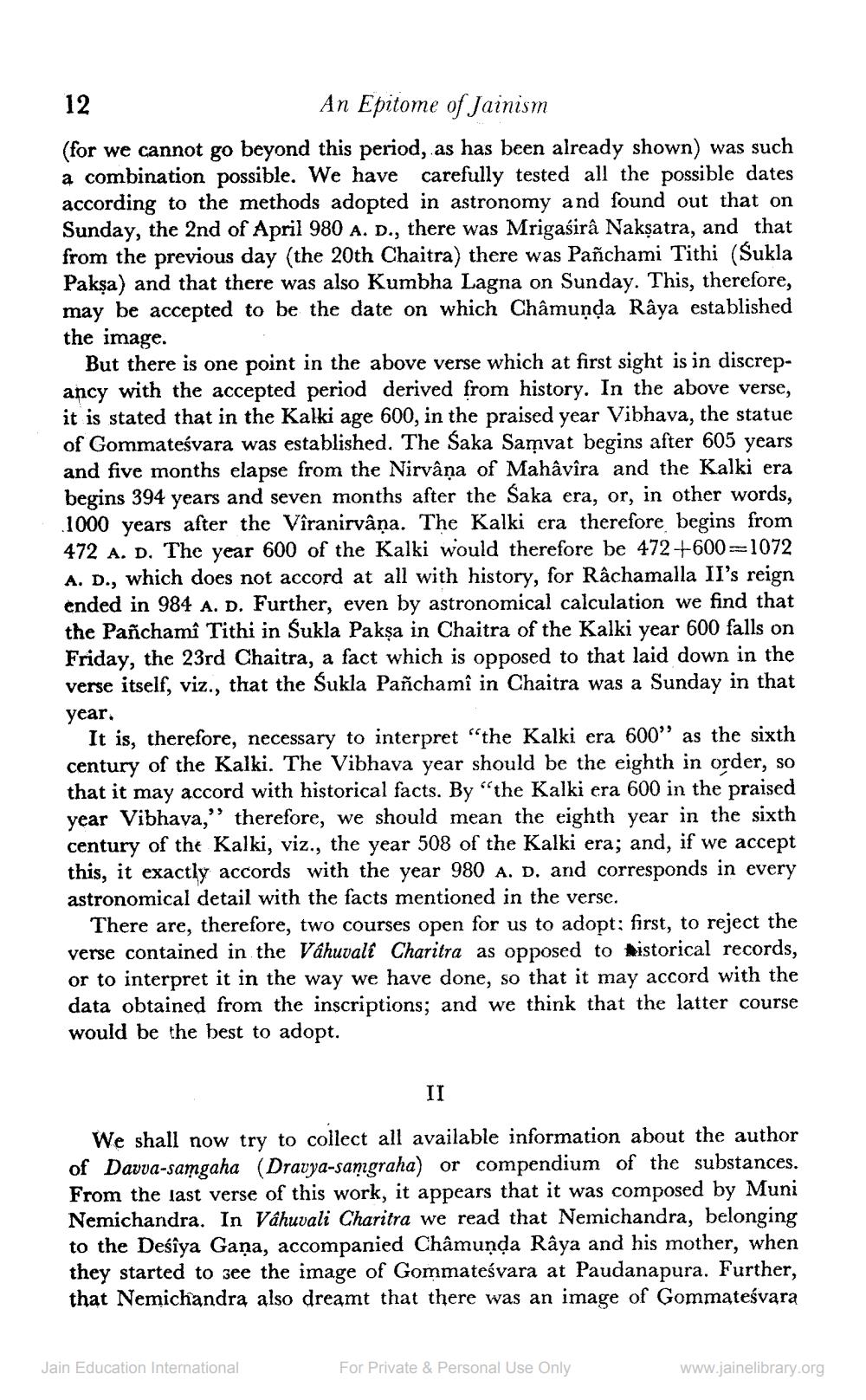________________
12
An Epitome of Jainism (for we cannot go beyond this period, as has been already shown) was such a combination possible. We have carefully tested all the possible dates according to the methods adopted in astronomy and found out that on Sunday, the 2nd of April 980 A. D., there was Mrigasirâ Nakṣatra, and that from the previous day (the 20th Chaitra) there was Pañchami Tithi (Sukla Pakşa) and that there was also Kumbha Lagna on Sunday. This, therefore, may be accepted to be the date on which Châmunda Râya established the image.
But there is one point in the above verse which at first sight is in discrepancy with the accepted period derived from history. In the above verse, it is stated that in the Kalki age 600, in the praised year Vibhava, the statue of Gommateśvara was established. The Saka Samvat begins after 605 years and five months elapse from the Nirvâņa of Mahâvîra and the Kalki era begins 394 years and seven months after the Šaka era, or, in other words, .1000 years after the Vîranirvâņa. The Kalki era therefore begins from 472 A. D. The year 600 of the Kalki would therefore be 472+600=1072 A. D., which does not accord at all with history, for Râchamalla II's reign ended in 984 A. D. Further, even by astronomical calculation we find that the Panchamî Tithi in Sukla Paksa in Chaitra of the Kalki year 600 falls on Friday, the 23rd Chaitra, a fact which is opposed to that laid down in the verse itself, viz., that the Sukla Pañchamî in Chaitra was a Sunday in that year.
It is, therefore, necessary to interpret "the Kalki era 600” as the sixth century of the Kalki. The Vibhava year should be the eighth in order, so that it may accord with historical facts. By "the Kalki era 600 in the praised year Vibhaya," therefore, we should mean the eighth year in the sixth century of the Kalki, viz., the year 508 of the Kalki era; and, if we accept this, it exactly accords with the year 980 A. D. and corresponds in every astronomical detail with the facts mentioned in the verse.
There are, therefore, two courses open for us to adopt: first, to reject the verse contained in the Vâhuvalí Charitra as opposed to Aistorical records, or to interpret it in the way we have done, so that it may accord with the data obtained from the inscriptions; and we think that the latter course would be the best to adopt.
IT
We shall now try to collect all available information about the author of Davva-samgaha (Dravya-samgraha) or compendium of the substances. From the last verse of this work, it appears that it was composed by Muni Nemichandra. In Vâhuvali Charitra we read that Nemichandra, belonging to the Deśîya Gana, accompanied Châmunda Râya and his mother, when they started to see the image of Gommateśvara at Paudanapura. Further, that Nemichandra also dreamt that there was an image of Gommateśvara
Jain Education International
For Private & Personal Use Only
www.jainelibrary.org




